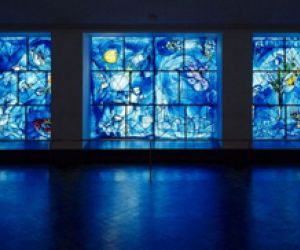Centerfield

Given a choice, centerfielders always sit in the back of the room. We’re more comfortable there, where we can see the whole playing field. So, while other local government folks are sitting up front, where they’ll be seen, I take a seat at the back of the Figge lobby for the Americans for the Arts economic study luncheon. The table’s empty, so I get the perfect seat, dead center to [home plate] the screen.
Kay Runge takes the right field seat and Janet Brown-Lowe plays left field. Kay’s on the Dean’s Advisory Council at ISU and asks how Amanda’s doing (great). Janet thanks me for some help with the Jens Jensen exhibit, which leads to a discussion of Colin trying to choose between architecture or landscape architecture as a collegiate pursuit. In the glass palace, I wonder if Mr. Chipperfield ever crossed paths with any landscape architect. If so, his work shows little evidence of it. Pleasant lunch chat about the Bauhaus movement (never wrote that sentence fragment before) comes to an end when Randy Cohen is introduced for the presentation.
Mr. Cohen tells the crowd what they want to hear; art is green. Specifically, he presents a study that non-profit arts and culture is a $71 million annual industry in the region, supporting 1,906 full time equivalent jobs and generating $7.79 million in state and local revenue. It’s all good info, no doubt to be repeated by art aficionados who’ll come to the City Council asking for funding. It will be interesting to dig into the report when it’s available, and look for detailed info about Davenport’s return on investment.
The Figge’s in the on-deck circle, waiting to step into the batter’s box to ask for a continuation of the City’s $753,000 annual contribution after the Vision Iowa agreement expires. By the end of the agreement, the City will have pitched in more than $21.5 million. Whether that is too much, too little or just right is for others to decide.
But here is what I know for sure. After Wrigley Field, my next favorite place in my hometown is the Art Institute. For a place with some of the world’s best art, it was a kid friendly playground. The Art Institute’s enlightened practice of free admission for kids gave me the same access to priceless treasures as the richest bluehair matron from the Northshore. I could run up the Michigan Avenue stairs, past the guardian lions, and visit my old friends Hopper, Chagall and Seurat, or be awed by new installations any day – for free. That practice continues to this day. Any child under the age of 14 can just walk into Chicago’s Art Institute.
As I watched Randy Cohen tell the lunch time suits how valuable the arts are in the Quad Cities, I was hoping for just one kid, either skipping school or going to school at the Figge, to walk through the front door. It didn’t happen. But it should.
Centerfielders don’t live by cans of corn alone.

